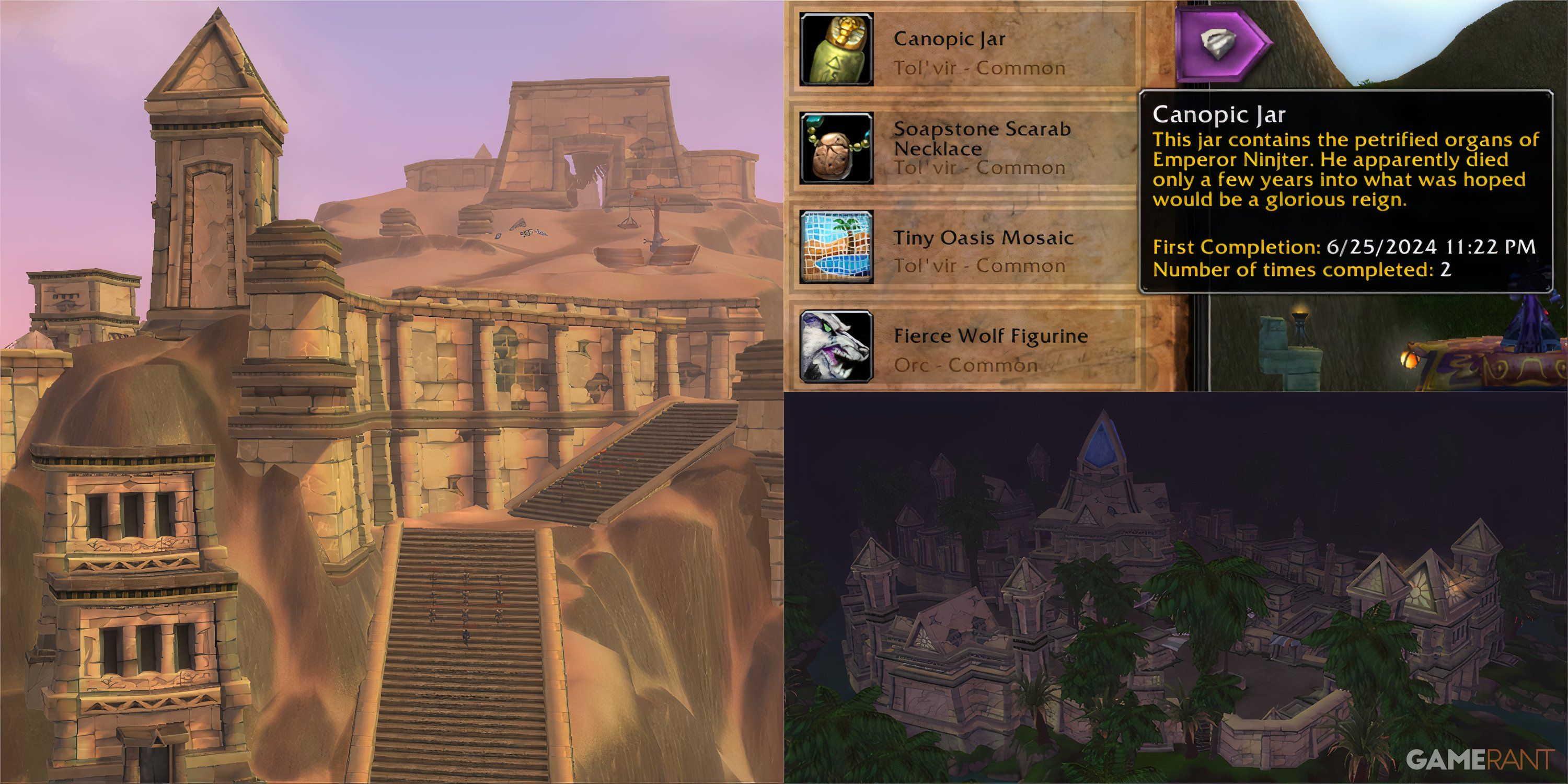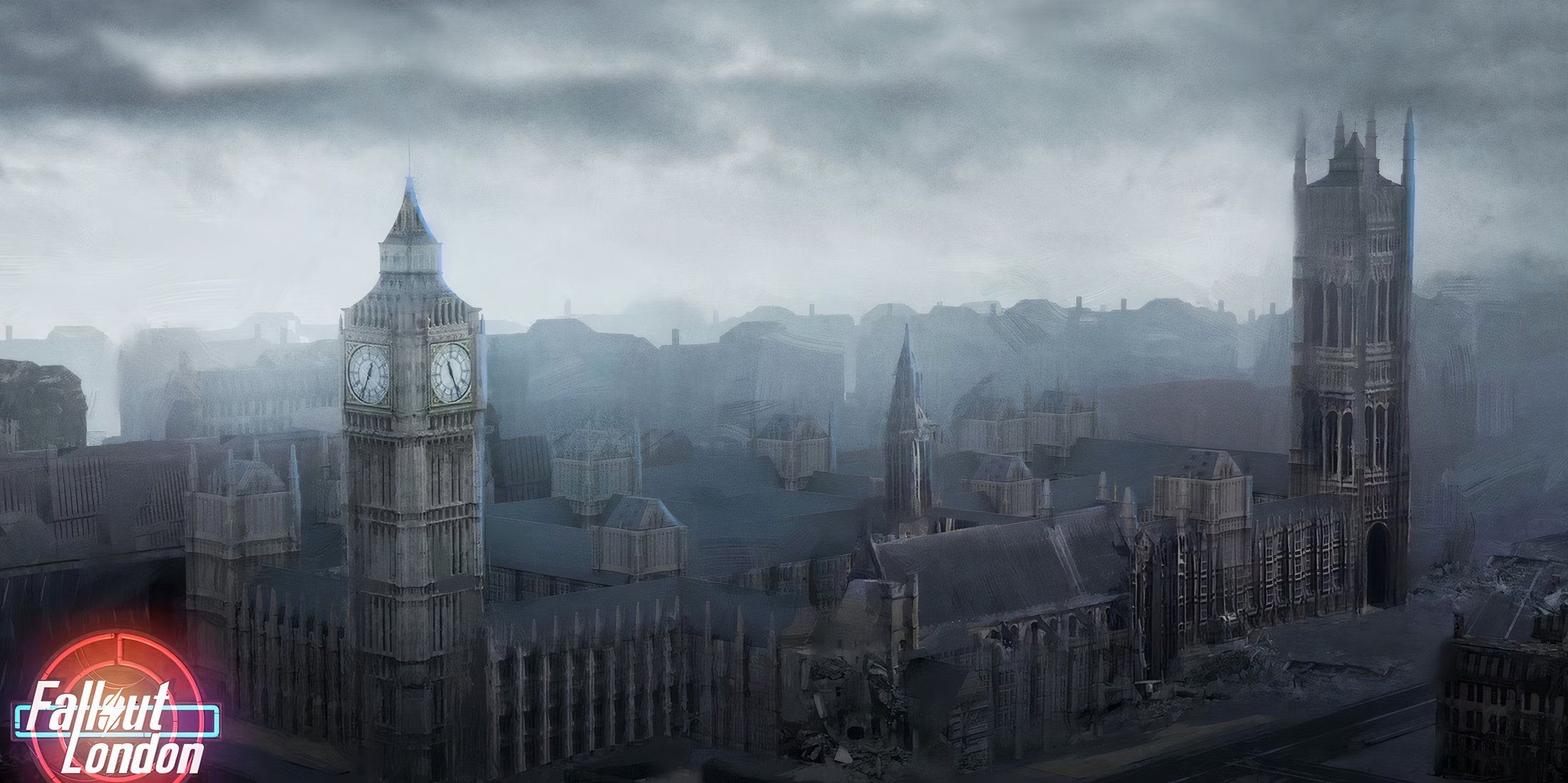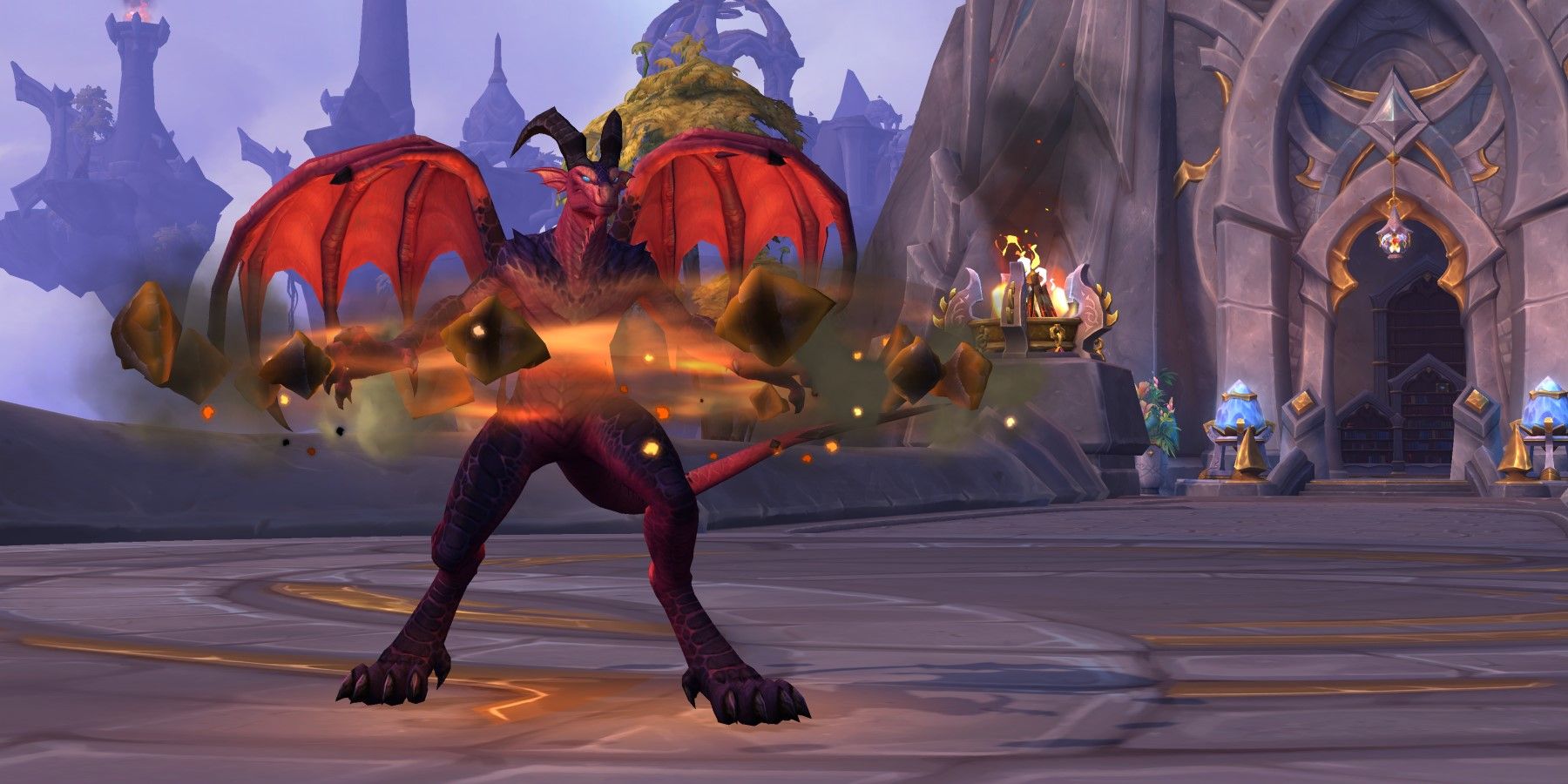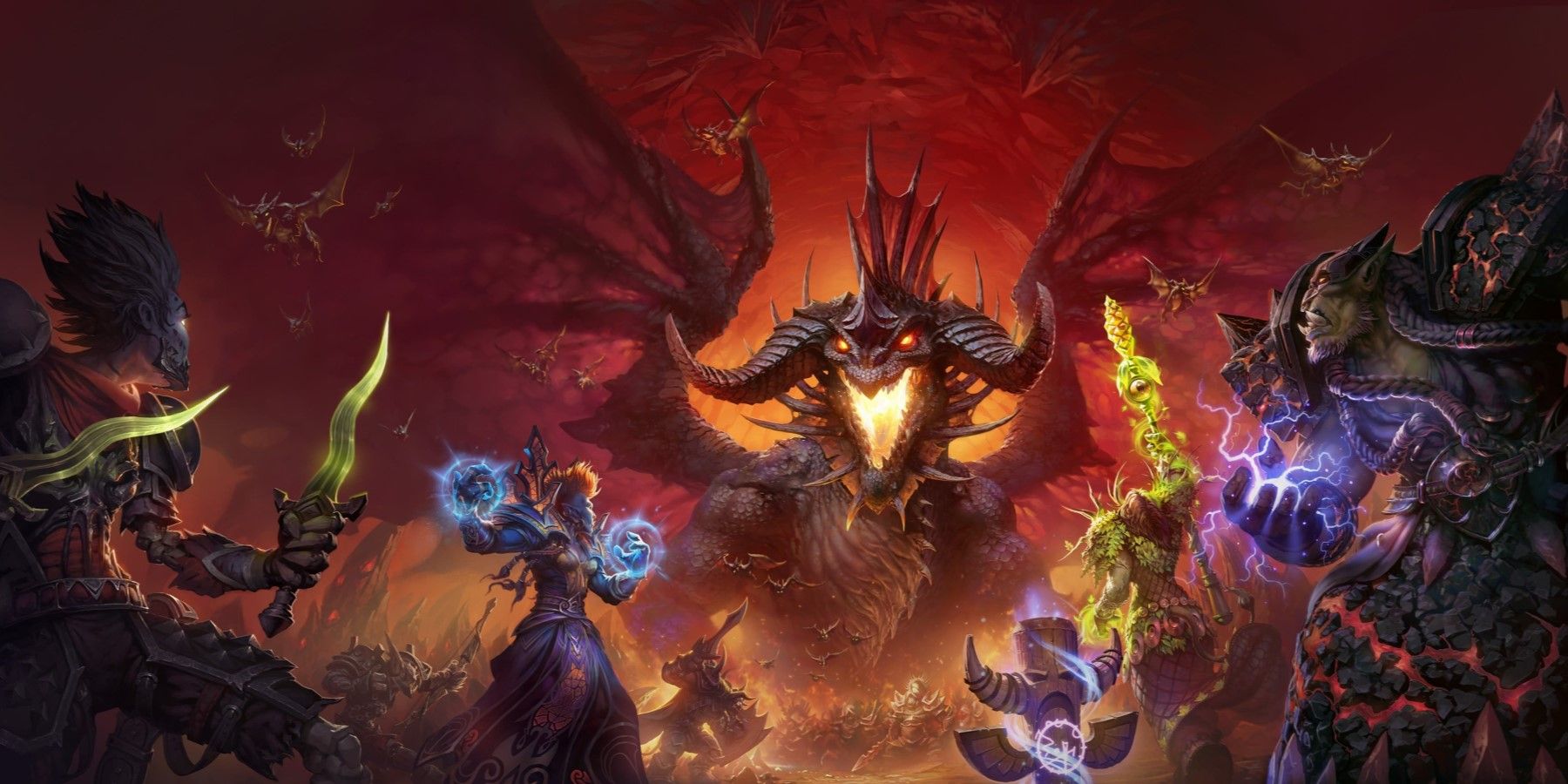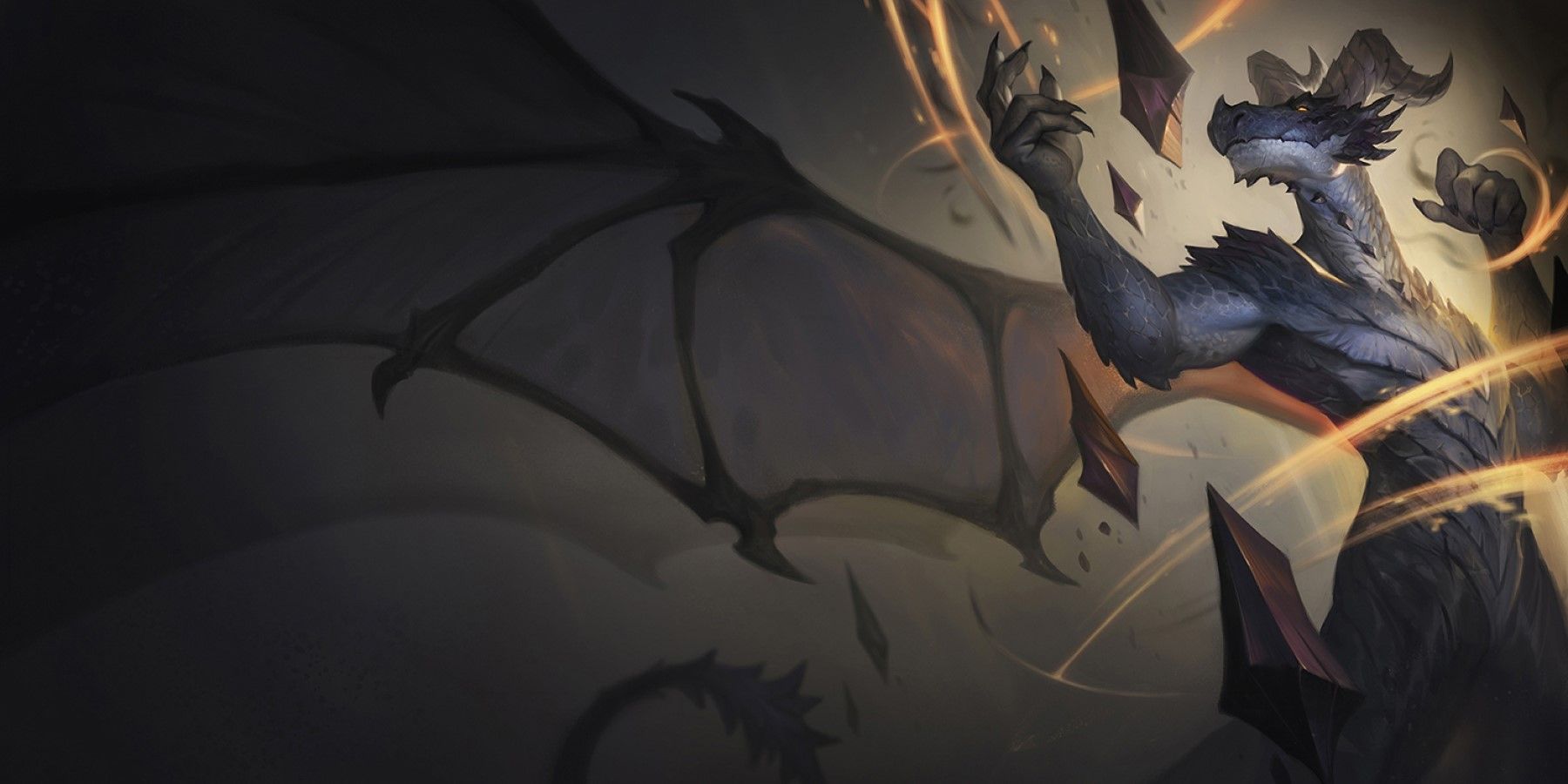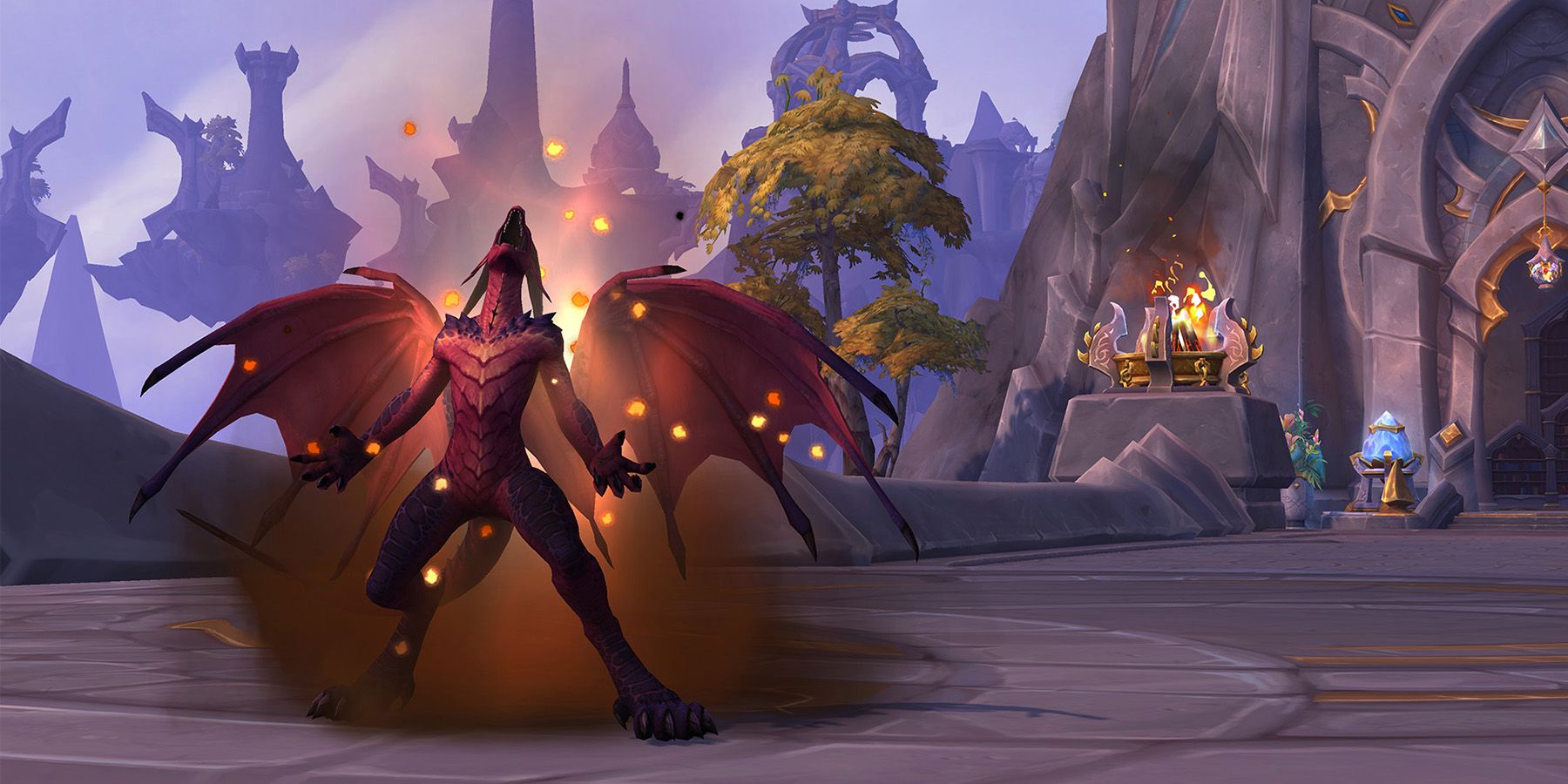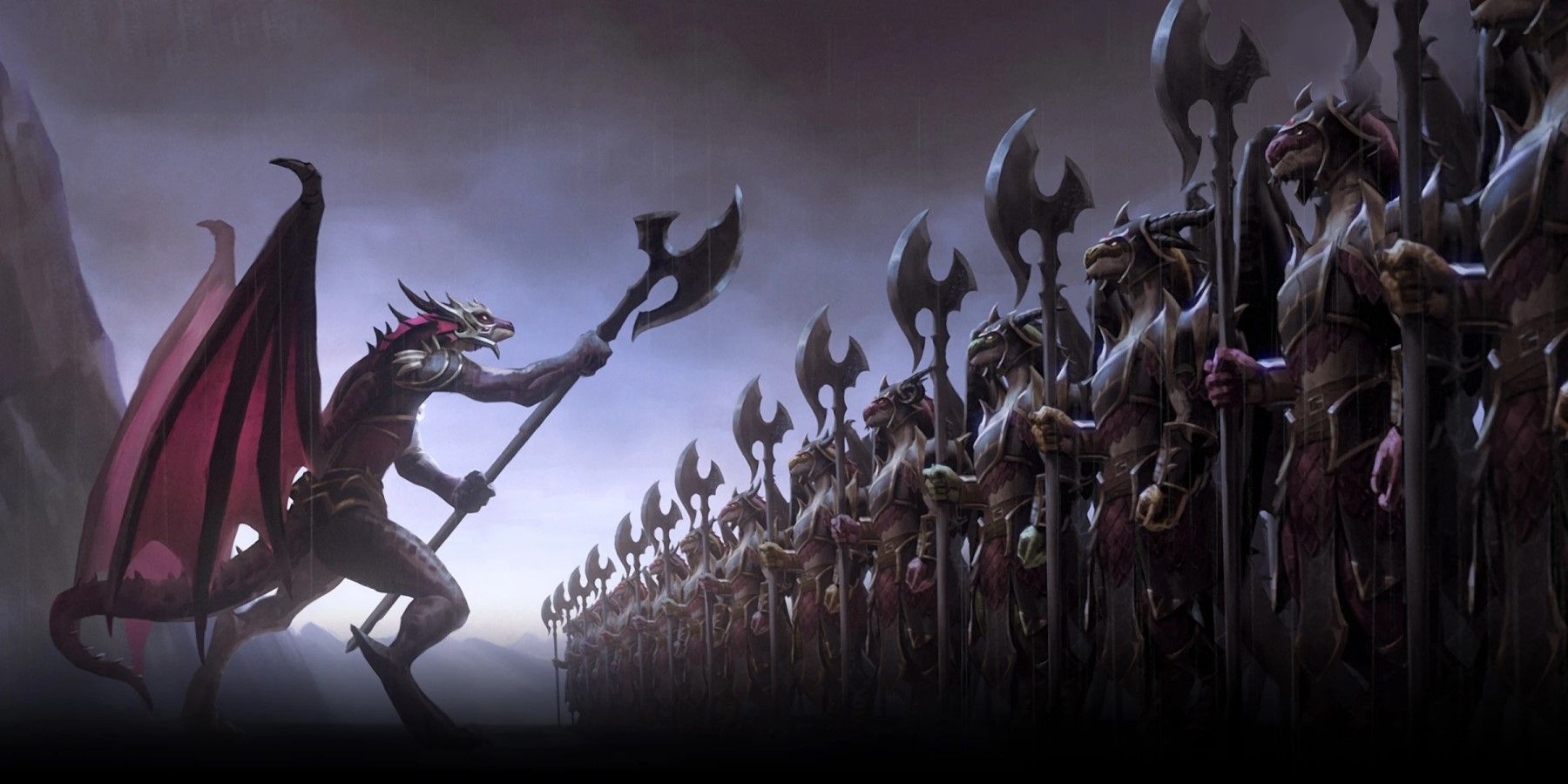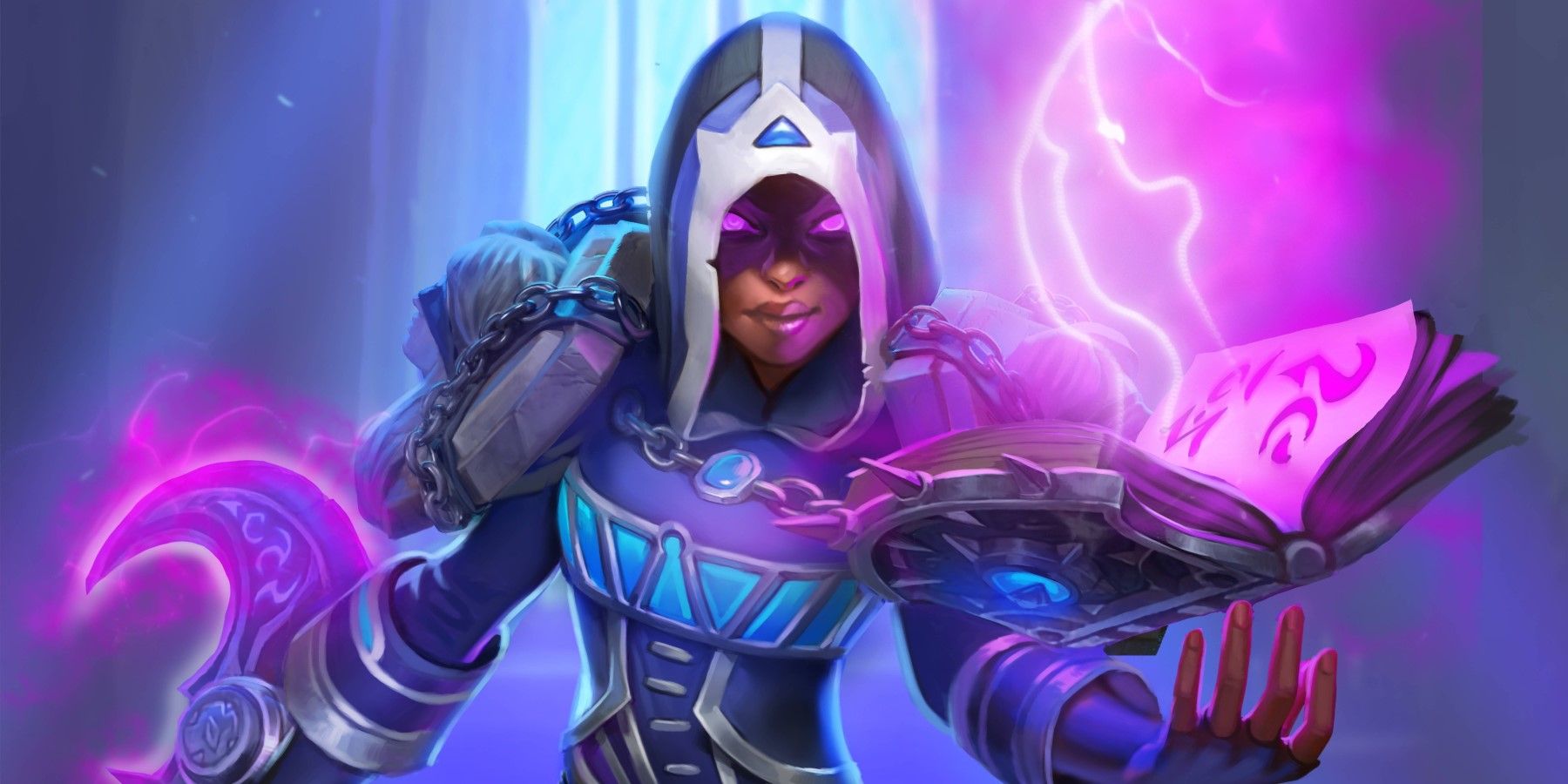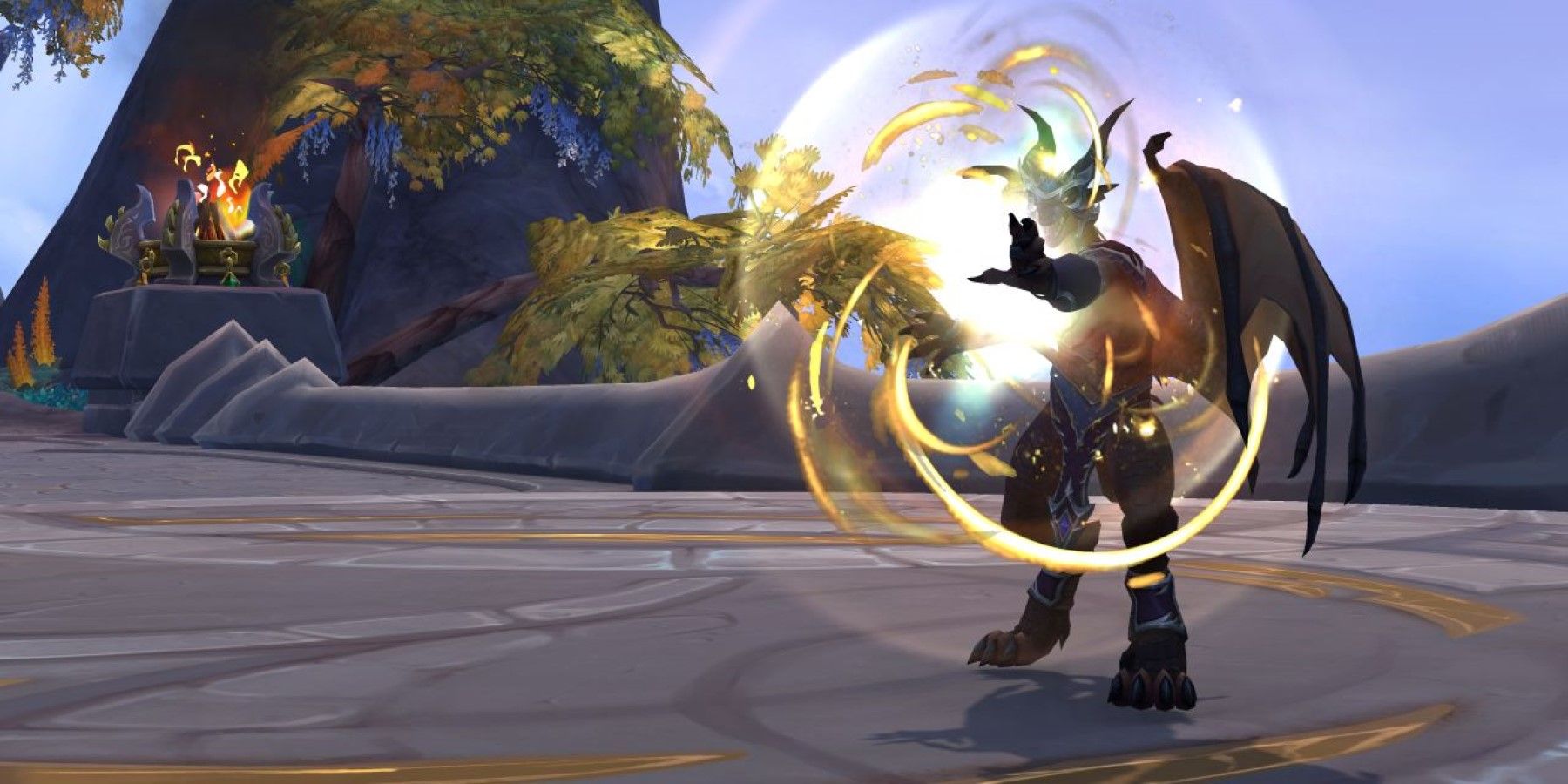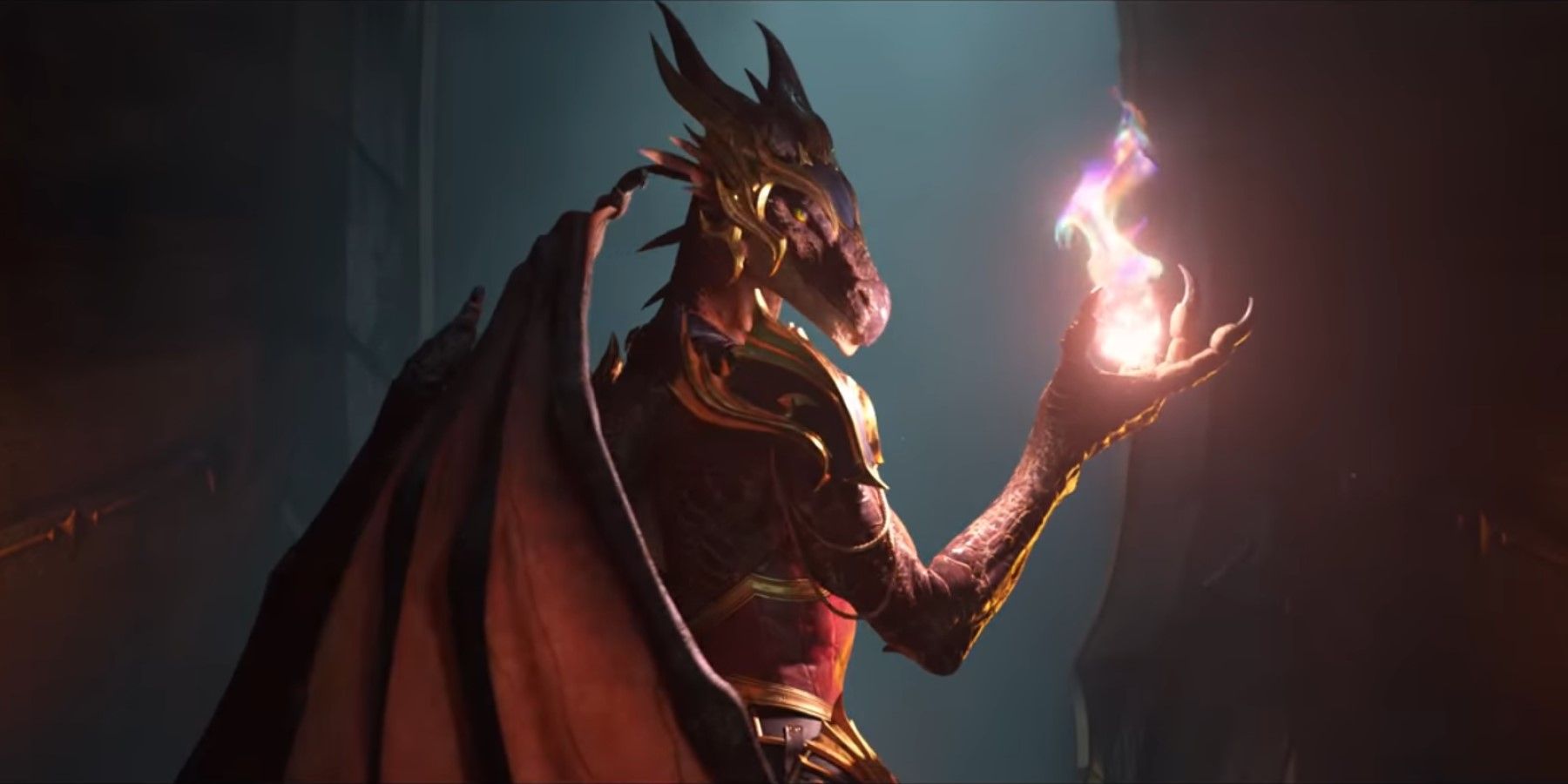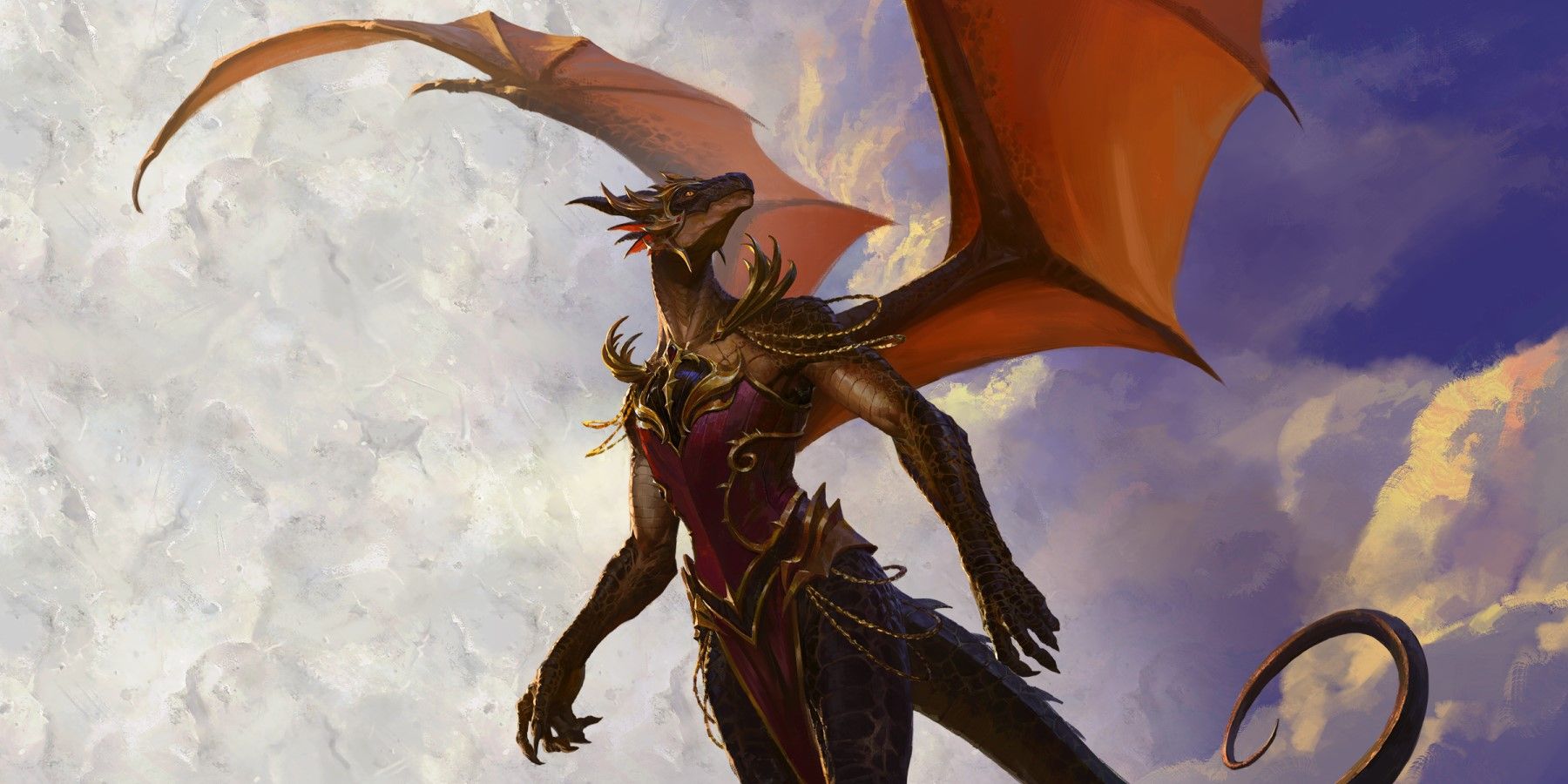World of Warcraft Patch 10.1.5, Fractures in Time, is nearly live, bringing with it new daily activities and a megadungeon, several quality-of-life updates, and expansions to Warlock class options. However, one of the most exciting things about the new content update is the Augmentation Evoker - a third specialization coming to the Dracthyr-only class. Not only is this new playstyle breaking ground by adding an original spec to a class mid-expansion, but it is also creating a new DPS archetype with the buff-focused support abilities Augmentation brings to World of Warcraft.
Game ZXC spoke with World of Warcraft senior game designer and Evoker expert Graham Berger about the new Augmentation specialization. He gave a sneak peek behind the development curtain and shared some of the most challenging, rewarding, and hilarious moments of creating the new player option. Berger also talked about how the specialization works, how they plan to balance it, and what it could mean for the future of World of Warcraft. The interview has been edited for brevity and clarity.
Q: When did the development team decide to start making the Augmentation Evoker, and what did that process look like?
A: When we were first talking about Evoker way back when, one of the key things was you have these five types of Dragon magic, the five main flights. We wanted to do something with all of them. So, when Devastation and Preservation found their form in being Red and Blue and Green and Bronze, that left Black on the table. We have a couple of spells in the class - Deep Breath, Landslide, and Obsidian Scales - that are class-wide Black Dragon spells, but that’s not the same sort of full kit you see with the two specs.
So, we were talking about “Okay, so, what do we want to do with that last color?” It’s super cool, we have this opportunity to define what is pure Black Dragon Magic, rather than the Shadowflame stuff we’ve seen from Onyxia and Nefarian in the past. So, what could we do with it? But, for launch, we really wanted to focus on Devastation and Preservation, these main damage and healing roles, and delivering those as fully as we could.
When the team started talking about this idea, we had Black magic, and we wanted to do more with Bronze magic because, in a way, that is the most unique magic school Evokers have. We don’t get to mess with time magic as players very often, so taking that to its fullest was really exciting, and the idea of this support playstyle is something the team has talked on and off about for years, but never quite had the moment for it. With Bronze, you can do all sorts of weird stuff to your friends with time, and Black has this very protective and empowering nature. The good side of it, can we do something with that?
But we knew it was going to take more time. We want to make sure we have the runway to get this right because it is super new for the game, and it is this really different playstyle, and we have a lot of questions about: how does this fit into the fabric of the game? How do you balance it? How do you make sure it can play in groups nicely? How do you make sure it can solo well? How does the player who’s playing this playstyle know if they’re doing well?
We wanted to make sure we had time to answer all of those questions and make sure we were happy with those answers before showing it to players, so positioning it for this later content update worked really well. It also aligned nicely with continuing the story of the Dracthyr through Dragonflight. So, it was something we talked about super early on from the very beginning, but we decided we were going to need time to get this right, where we can fit it in later while still being a part of Dragonflight’s story overall.
Q: What led you to make the decision to try and do a support DPS style for the Evoker, and what the journey of making that idea a reality looked like?
A: When I say the team has been talking about the idea of making a support, it's more that it is something that gets brought up in discussions like hey, here’s a playstyle we haven’t explored yet. Wouldn’t that be cool? No specific plans - it’s not like we’ve been working on this for 10 years and waiting for the right moment. But talking about Augmentation Evoker was something the feature team working on that class came up with. They took it to our design leadership and said, “Hey, we think we have the shape of this for real. What do you think? Here’s a working prototype of it.” They playtested it, showed it to them, had them playtest it, and got sign off to say, “This seems promising, this is a more full picture of what we’ve talked about in the past, let’s chase it down.”
But we needed to answer all those questions I stated, work with our engineering partners, say what additional tools we needed to build this in the way we wanted to, figure out what we needed to do so players know how well they’re doing, and add advanced combat log information and things like that. As an update to the UI, Augmentation has stuff on its player portrait to show you the uptime of your spell, Ebon Might, which is a big part of your buff contribution to the group. A lot of pieces and a lot of effort from various parts of the team to make it a reality. But it starts from the seed of an idea, and the question of if can we explore it, and do we have time. Okay, awesome, let’s take a look and check in along the way of what direction is this going, and if we are all still excited about it.
Q: How well does the Augmentation Evoker’s damage compare to other specializations?
A: On the balancing standpoint compared to Devastation or other DPS, Augmentation is a damage dealer. You queue as a damage dealer for dungeons or for PvP, and it fills that role. So, the intention with balancing is that the total contribution you bring to the group will be equivalent to that of another DPS. In terms of the raid leader putting together a group for the night, or coming up with your RGB team, we didn’t want to add a fourth role that suddenly the whole game has to consider. This is meant to just be an option.
So, for their spells and the way they interact with different groups, we built in a lot of tuning knobs to be able to accomplish that. Whether you’re with one person or five people or twenty people, we have things we can turn knobs on to make sure you are still worth about one other DPS player.
Q: You mentioned previously that you wanted to make sure players could tell they were doing well with the new Specialization. What measures are you taking to do that?
A: That’s a complicated one. We have a lot of different types of players in our game, right? First and foremost is like, are you successful at the activity you’re doing? The balancing achieves that. You do a Mythic 5 or 10 keystone, you beat the timer? Great, Augmentation is fine.
The second part is damage meters. A lot of players use that type of add-on. For Augmentation, because you’re buffing others, their damage shows up under other people’s bar. If you give the Arms warrior a bunch of primary stat and versatility, they’re going to be doing more DPS on those meters than you are. But, that is something players should recognize. Like, “Normally when I’m in this dungeon, I do 80k DPS, and now I did 100k. What’s different? Ah, I was getting a bunch of buffs from this player.”
They have some abilities that will directly contribute to another player’s damage. You have Inferno’s Blessing, where when you Fire Breath, you buff your allies with the Inferno’s Blessing, and they have a chance to throw additional fireballs. So other players, under their breakdown, will see Inferno’s Blessing, x damage.
For the Augmentation player themselves - and this was one of the many things the UI and engineering helped us with - when you throw out your buffs, you actually see them on the battlefield as floating combat text. So, you’ll see +800 Strength or +3% Critical Strike to give you feedback of, “Hey, your buffs are doing something. You had an impact on the playing field and your allies, and it’s not just invisible math behind the scenes.” All of those in combination let you see the impact of your actions and give you the feedback that you’re doing things and taking action, and also let other players see what you’re doing.
Q: As a class that relies on buffing others, how does the Augmentation Evoker work during solo play?
A: So, super important question from the outset. It is a damage dealer role; if this is the way you like to play - if you like the aesthetic, if you like the rotation, any reason - we don’t want you to feel like you have to switch to Devastation to solo effectively. The way we’re accomplishing that with Augmentation is that they actually play a lot more like a tank when soloing than a DPS.
You have a spell called Blistering Scales in your Talent Tree that gives your ally a bunch of armor and a thorns effect when you get attacked. When you’re soloing, you put that on yourself. It makes you a lot more survivable, and it gives you extra damage. A lot of your buffs, you can apply to yourself, so, instead of giving your friend Critical Strike, you can give it to yourself. When you’re in a group, it’s more effective on other people, but you can still buff yourself with it.
They have a fair bit of burst AoE damage, even on their own. The way Tanks play in the outdoor world is to pull a bunch of enemies, group them together, and AoE them down. Augmentation plays similarly; pull a couple of things, then use your Breath of Eons to fly over with your Deep Breath equivalent, and spam Upheaval and Eruption - your big Black Dragon explosion AoE effects - to nuke all those enemies down while you’re taking reduced damage. They have a cheat death in their Talent Tree, all that sort of stuff. So, they’re much more survivable, but they don’t put out the same direct throughput that Devastation would.
Q: When players found the first hints of the Augmentation Evoker, many thought it was going to be a tank specialization. Why did you decide to go with the support DPS idea rather than fill the one role Evokers are missing?
A: Fair question! The themes of Black Dragon magic would lend themselves to a tank pretty naturally, but for the team, it was two pieces. One, with Evoker, they are a spellcaster first and foremost. They play at this mid-range, they’re hurling spells, they’re releasing their magic from within, and we wanted to build on that. We feel that has been a really resonant theme, and it’s one we’re excited to keep playing up, and all the visuals and animations of how they release their spells feel so different from how other classes cast magic. We wanted to see more of that.
The second was, frankly, this support playstyle, as we started to talk about it, the team was just really excited. It was less that we don’t want to do a tank for some reason, but we wanted to build this support playstyle. This sounds awesome, we’re all stoked about it. Any time you can get the team really excited and passionate about something, you know it’s going to be awesome. I think it was more than that. This was a cool thing, and we were excited to build it and bring it to players.
Q: We’ve only seen a new specialization added to World of Warcraft once before, with the split of Feral into bear and cat form, but this is the first time we’ve seen a brand new one. How did it feel to redefine how specializations are added, and what was it like being able to make history in this sort of way?
A: Complicated! There was a lot that went into it. What really sold it for us was being able to tie it into the rest of the content being released in Fractures in Time. It is the fact we’re continuing the story of the Dracthyr. As exciting as new specs and new classes are, they’re a ton of work. They are a monumental effort from the design team, from engineering, art, UI, sound, everyone. So, it really has to be the right time and place and fit, and so for Augmentation, we wanted to see more from Emberthal and Ebyssian and really understand the background of the Dracthyr, and uncover the last secrets and lost memories. Doing something as cool as getting a new spec for it? I don’t know if we could do something bigger than that!
It was really cool for us, it was really exciting, but it took a lot of boxes being checked to make that a reality. Going forward, which I think is the natural question, those things still have to be true. What’s the story the game is trying to tell? Is this the right time? What are we adding to the game? Is it something players want? Is it something that’s going to help us push World of Warcraft forward? All those things have to be in place. Certainly, we’re very proud of it. It’s very different, it’s a little scary, but it has been a journey, and I’m really excited to finally get it into players’ hands.
Q: What other classes would you enjoy designing support DPS specializations for?
A: Whether we do them or not is really going to depend on how the community reacts to Augmentation. We believe there’s an audience for this play style. Is it an audience that wants a ton of options? Are they looking for more? And again, does it fit with the story we’re telling in future expansions?
But looking back at World of Warcraft’s history, I think there are a lot of opportunities to deliver on this playstyle we’ve seen tastes of in the past. You think of Enhancement Shaman Totem Twisting in Wrath of the Lich King, or Shadow Priest’s Mana Return in Burning Crusade. I don’t know that we would go change those specs as they are today to be support playstyles, but I can imagine those themes and this archetype fitting pretty naturally for our players with those classes. I imagine that might be where we look first, but no plans as of yet, and it really depends on where the future of the game goes.
Q: Buffs are often highly-coveted by members in a party or raid. Do you worry players might be upset if they don’t get them from the Augmentation Evoker?
A: For Augmentation Evoker, way before we went to PTR when we were in development, when we were thinking through what a support playstyle looked like, we were looking at those old examples of Shaman, Shadow Priest, and Paladin, and talking about how we bring that into the modern game. How do we fit with the way players are playing World of Warcraft today?
We tried a whole bunch of different stuff. We were just throwing spells into the editor and ripping them out the next day. But the playstyle we were messing around with initially was to pick your best friend and buff the heck out of them. We tried a mechanic that was sort of like the Paladin Beacon where you put a marker on an ally and a lot of your stuff would automatically target them because we wanted that approachability and ease of learning from the very beginning, so we were experimenting with things like that.
But, what happened, even in our internal playtests where there are no stakes, and we’re not trying to beat a timer, was “Wait, why are they getting all the buffs? Why are they super strong and I’m over here just doing my thing?” They were not interacting with the Evoker, not even caring they were present because they were not buffing everyone else in the group. So we shifted to the much closer to the playstyle we’re seeing today.
Ebon Might buffs four people, so in a dungeon or an Arena, everyone’s getting buffed by you. That spell alone is a huge portion of your contribution. You have things like Prescience, which is the Critical Strike buff in your Talent Tree. Its cooldown is short enough that you can keep it rolling on two or three people. It will automatically seek out nearby damage dealers, optimizing for you if you don’t want to target people yourself. Breath of Eons, their big flyover that creates those temporal wounds that are like ticking time bombs your allies contribute to, is keyed off of Ebon Might, so everyone in your group is building one of these bombs up for themselves.
That group-minded altruistic focus felt way better. Everyone in the group is getting buffed. It doesn’t matter who you are in a dungeon, what role you are, everyone gets to feel the Augmentation Evoker’s presence. For their utility kit, we made sure they have things that help the tank, like Blistering Scales, or the healer, too. We have a spell called Spatial Paradox, where you give your healer the ability to cast while moving and increased the range for their spells. Really, it was a focus we added later in the development cycle - not late, but later than the beginning - of making sure everyone cares you’re there at your party. Trying to skirt that problem of feeling jealous or being disappointed you aren’t getting buffs? Everyone should be excited you’re there.
Q: The Evoker has been out for a little over half a year now. How do you think it’s performed since then? Would you have done anything differently about its release?
A: I think even from the outset, the reception has been really positive. Anecdotally, the people I play games with, we have multiple Evokers in our raid, and they’re having a blast with the class. I think the themes have come through so strongly, and that’s been heartwarming for us to see. Players are excited to play it and enjoy the class. That’s always the main goal. Are people having fun? And I think we’ve hit that, which is awesome.
In terms of anything I or the team would have changed, it’s easy to look back and say we wish we had done the tuning buffs or nerfs sooner. But it’s so hard, especially early on. You’re on a PTR cycle, data is limited. I think the cadence the combat team as a whole has taken to tuning and making adjustments for the game has been working out really well. So, happy with where Evoker is at tuning-wise, and obviously going to keep an eye on that.
But no, I think there are a couple of things we found out during PTR that would have been great if we had gone to PTR with those initially, that would have been easier for us rather than reacting later, but I don’t know that I would change it significantly. Not an interesting answer, but I think it’s a lot of fun. That’s all we want, that’s awesome.
Q: What have been your favorite parts of developing and releasing the Evoker and the Augmentation specialization? What have been the hardest parts?
A: My favorites are the amusing parts. Any time people catch bugs on PTR that end up being funny, that’s always great. It’s like okay, we should fix it, but that’s hilarious. I think this still happens in the game; if you pop a toy that transforms you into another model, like you turn into a gnome, or you take a Noggenfogger and turn into a skeleton, and then cast Deep Breath, it looks very silly. You’re just a skeleton flying with arms flailing and fire breath coming out of your head. Seeing Reddit explode with images of when people first figured it out was like, “Okay, yes it looks very silly, but that’s fine.” Didn’t end up doing anything about that one in particular because it’s harmless, right? It looks silly, but it’s not breaking the game, it’s not an exploit. Have fun. But that’s always fun.
For Augmentation, some of the community members put together a raid on PTR. They had 15 Augmentation Evokers, a tank or two, and a healer or two. And so, they’re doing trash in Aberrus, and they cast Upheaval, which is the new Empower spell. It erupts the earth beneath the target’s feet - empowering it to expand the radius - and it knocks them into the air. But, when you get 15 players all doing a knock-up at the exact same time, the trash is going through the roof! Very funny, had to fix that one. But thank you for testing! We always appreciate that stuff.
For stuff that’s more challenging, like we were talking about earlier, balancing is always a challenge, and Augmentation doubly so. Getting as much data as we can, making the best guesses we can, but then reacting to what players do and tuning appropriately. Are players going to notice interactions we weren’t planning for?
I think there’s a lot of invisible work there players might not see that turns into one line on a patch note about adjusting this ability up or down, or changing a cooldown, but on the backend, we spend a lot of time sifting through data and talking about the right changes to make, and how is that going to affect every portion of the game. You change the cooldown of one spell, and that’s an easy fix for players at this end, but players at the other end, they enjoyed pushing that button more often because it looked cool. What’s the right choice to make? We spend a lot of time talking about stuff that never really gets seen, but that’s a lot of our work.
Q: Determining the impact of a support DPS seems more complicated than most others. Do you have concerns about the challenge Augmentation Evokers will add to the balancing process?
A: There is a hyper-focus on Augmentation right now. Understandably. New spec, being added in the middle of a patch, that’s new and different and weird, and it’s this new playstyle, so it totally makes sense. But, from our perspective, every value they have, every buff they give is numerical in some way. We can adjust that up and down as needed. Doing it in the middle of a season is actually ideal because we’re not disrupting the race to world first or things like that. Things are on farm for a lot of groups, so get in there, try it out. If it gets tuned up or down before Season 3 comes out, you’ll have a lot of notice in advance.
Overall, the way we’re looking at it is they are another DPS, right? With the three different Rogue specs, when one is performing better than the other two, you see that shift in population for a certain type of player. I expect the same for Evoker in a lot of ways. Yeah, if we’re wildly off on tuning, a lot of people will shift to one or the other, but we’re hoping it won’t be this clear-cut either they are 100 of them or 0 of them because it is just another type of DPS. Augmentation is such a different playstyle from Devastation that a lot of people are going to gravitate towards one or the other naturally.
Q: Any final thoughts on the Augmentation Evoker, Fractures in Time, and Dragonflight?
A: Like I’ve been saying, super excited to see this come together and get it into the players' hands. I think the audience for this type of playstyle is one we hope embraces Augmentation and will really enjoy it, and enjoy buffing their friends and making them as strong as they can be.
I think an important thing to plug is that Augmentation is available as soon as the patch launches. If you’re an existing Evoker, you can go play it. We do have some questing with Emberthal and Ebyssian to learn more of the history, to free Adamanthia and understand Augmentation, but it’s not necessary to play it. Really excited about that too. We talked about if the spec should be locked behind the questing, but we know there are a lot of players who just want to get in there and try the new thing and go do a dungeon, so we’re happy to make sure that’s an option for them. I hope you have fun playing it!
[END]
World of Warcraft is available now for PC.

